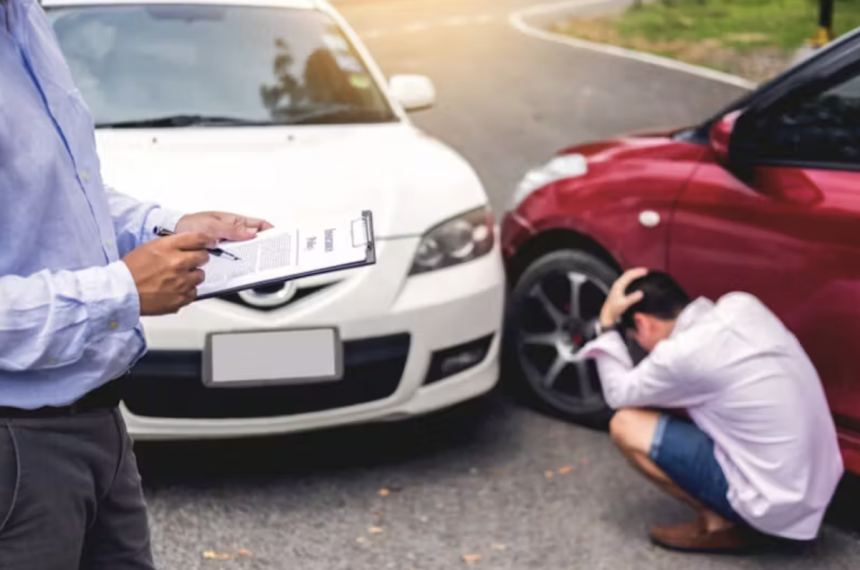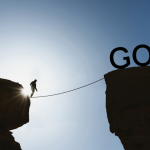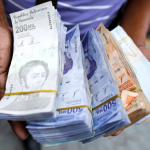Documenting evidence after a car accident is essential for establishing a factual basis that influences both legal and insurance processes. You’ll want to gather important information, like witness statements and photographs, as memories can fade and details may degrade over time. Accurate documentation strengthens your position in potential disputes and aids in liability determinations. Additionally, collecting police reports and noting environmental conditions provide fundamental context. If you’re unsure how to proceed or want expert advice, consider seeking free car accidents consultations to better understand your options. Remember, the quality of your evidence can greatly affect outcomes, especially with insurance claims. Exploring further will reveal more strategies for effective evidence documentation and its implications.
Why Evidence Matters
Gathering evidence after a car accident is essential for establishing the facts of the incident. This process not only aids in clarifying what happened but also plays a fundamental role in any legal or insurance claims that may arise.
Evidence retention becomes crucial; the longer you wait to collect and secure information, the more likely it’s to become lost or degraded. Photographs of the scene, vehicle damage, and any relevant road conditions can serve as pivotal pieces of evidence.
Moreover, eyewitness reliability is another key factor. People’s memories can fade or become distorted over time, so obtaining their accounts as soon as possible is necessary. You should ask for contact information and confirm their statements are recorded accurately. This can greatly bolster your case, especially if there are discrepancies in the accounts of those involved.
In essence, the importance of gathering and retaining evidence can’t be overstated. Doing so not only provides clarity in the chaotic aftermath of an accident but also strengthens your position in potential disputes, guaranteeing that the facts are preserved and accurately represented.
Types of Evidence to Collect
After a car accident, collecting various types of evidence can considerably impact the outcome of any claims or disputes.
Start with gathering witness contact information. Witnesses can provide essential accounts of the accident, helping to establish fault and corroborate your version of events. Be certain to collect names, phone numbers, and addresses.
Next, create an accident timeline. This should include the sequence of events leading up to, during, and immediately after the crash. Document the time of the accident, road conditions, weather, and any relevant traffic signals or signs. This timeline will serve as a clear framework for understanding the circumstances surrounding the incident.
Additionally, gather any relevant documentation such as police reports, medical records, and insurance information. These documents provide a factual basis for your claims and can be instrumental in negotiations.
Lastly, if you notice any nearby surveillance cameras, note their locations. Video evidence can be invaluable in validating your account.
Taking Photos Effectively
While documenting evidence after a car accident, taking photos effectively is important for capturing the scene accurately. Start by ensuring good photo composition. Frame your shots to include the entire vehicle, any damage, and the surrounding environment. This context can prove invaluable later.
Next, adjust your smartphone settings to optimize image quality. Use the highest resolution available, and consider enabling grid lines to help with alignment. This will assist in maintaining a balanced composition. Natural lighting is critical, so try to capture images during daylight hours, avoiding harsh shadows.
Take multiple angles of the vehicles involved, as well as any relevant road signs, skid marks, or debris. These additional details can provide a clearer picture of the accident’s dynamics. Remember to capture the license plates of all vehicles involved, as this information is essential for insurance claims and legal proceedings.
Lastly, don’t forget to document the environment, including weather conditions and road conditions, as these factors can influence the incident.
Gathering Witness Statements
Witness statements play an important role in establishing the facts of a car accident. Gathering these statements requires a strategic approach to guarantee their credibility and reliability. Start by identifying potential witnesses—individuals who were present and observed the incident.
Approach them calmly and respectfully, emphasizing the significance of their account for the investigation. When collecting statements, ask open-ended questions to encourage detailed responses. Document their accounts as accurately as possible, noting the witness’s name, contact information, and any relevant details they provide.
Keep in mind that the credibility of a witness can greatly impact the strength of their statement. Factors like their relationship to the parties involved or their level of attention at the time can influence how their testimony is perceived.
Additionally, assess statement reliability by comparing multiple accounts. Consistencies among different witnesses can reinforce the validity of the information gathered. If discrepancies arise, further inquiry may be necessary to clarify conflicting details.
Ultimately, thorough and careful gathering of witness statements can provide essential support in establishing the factual basis of your case, which is crucial for any potential claims or legal proceedings that may follow.
Documenting Vehicle Damage
Documenting your vehicle’s damage is vital for establishing the circumstances of a car accident. A thorough damage assessment can provide significant evidence when dealing with insurance claims or potential legal actions.
Start by taking clear, detailed photographs of all visible damage from multiple angles. Confirm the lighting is sufficient to capture every dent, scratch, or deformation.
Next, perform a vehicle inspection to identify any hidden damages. Look for issues that mightn’t be immediately visible, such as frame damage or mechanical problems that could affect the vehicle’s safety and functionality.
Make notes of any unusual sounds or performance issues that arise during this inspection.
Once you’ve documented the visible and hidden damage, compile all evidence into a coherent report. This should include your photographs, written observations, and any relevant details like the time and location of the accident.
If possible, enlist a professional for an official damage assessment, as their expertise can add credibility to your documentation. Proper documentation of vehicle damage not only strengthens your position but also aids in a smoother claims process.
Collecting Police Reports
After evaluating the damage to your vehicle, collecting police reports becomes a key step in building a thorough account of the accident. The police report holds significant value as it provides an official account of the incident, detailing the circumstances, involved parties, and any citations issued. This document can serve as a critical piece of evidence when dealing with insurance claims or potential legal matters.
To obtain accident reports, you’ll typically need to contact the local police department that responded to the scene. Many jurisdictions allow you to request these documents online, but you may also need to visit the station in person. Be prepared to provide essential information, such as the date, time, and location of the accident, as well as your identification.
The police report significance can’t be overstated—it offers an unbiased perspective that can help clarify disputes, validate your claims, and expedite the claims process.
Make sure you request this document as soon as possible to reinforce your position in any discussions that may arise after the accident. Collecting and understanding your police report is a crucial step in steering through the aftermath effectively.
Noting Environmental Conditions
When evaluating your car accident, it’s important to remember environmental conditions that could have influenced the incident.
Weather conditions play a significant role in driving safety and can often be a contributing factor to accidents. For instance, rain, snow, or fog can reduce visibility and traction, making it more difficult to control your vehicle. Be sure to document the specific weather conditions at the time of the accident, including temperature, precipitation, and visibility levels.
Additionally, consider any road hazards present in the area. This might include potholes, debris, construction zones, or poorly marked lanes. Such hazards can create dangerous situations that could lead to accidents.
If you noticed any road hazards contributing to your accident, it’s important to record their specifics, including their location and any relevant signage or warnings.
Keeping a Personal Journal
Keeping a personal journal after a car accident can be an invaluable tool for reflecting on your experience and gathering essential details. Documenting your thoughts allows you to capture personal reflections that might otherwise fade over time. Writing regularly helps you articulate your feelings about the accident, providing clarity on its emotional impact.
In your journal, include specific details about the accident, such as the date, time, and location. Note any conversations you’d with witnesses or first responders, as these accounts can be significant later.
Reflecting on your emotional state immediately following the incident can also be beneficial. Describe how you felt physically and mentally; this can help you process the trauma and recognize any ongoing issues that may need attention.
Additionally, revisiting your entries can help you track your recovery journey, both physically and emotionally. By recognizing patterns in your thoughts and feelings, you can better understand how the accident has affected your life.
Ultimately, keeping a personal journal not only serves as a record of events but also acts as a therapeutic outlet to navigate the complexities of your experience.
Legal Implications of Evidence
Documenting evidence following a car accident carries considerable legal implications that can influence the outcome of any claims or disputes. The way you collect and present this evidence can directly affect liability determination.
If you fail to gather critical information, such as witness statements or photographs of the scene, you might weaken your position in a legal dispute.
Accurate documentation helps establish the facts surrounding the accident, which is essential for determining who’s at fault. This becomes particularly important during negotiations with insurance companies.
Insurance claims rely heavily on the evidence presented; your documentation can either support your claim or lead to its rejection.
Furthermore, thorough documentation can expedite the claims process, as insurers often require substantial proof to assess liability and coverage.
When you provide clear evidence, you reduce the likelihood of disputes regarding the details of the accident.
Ultimately, taking the time to systematically document evidence not only strengthens your case but also enhances your chances of a favorable resolution.
The legal implications of your documentation efforts can considerably impact both liability determination and the success of your insurance claims.
Frequently Asked Questions
How Soon After an Accident Should I Document Evidence?
After an accident, you should document evidence as soon as possible. The accident timeline is critical; prioritizing evidence collection helps guarantee accuracy and supports your case if disputes arise later. Don’t delay—act swiftly.
What if I Forget to Collect Certain Evidence?
If you forget to collect certain evidence, don’t panic. You can still gather witness statements later and contact your insurance claims representative for guidance. They can help you reconstruct the situation and strengthen your case.
Can I Use Smartphone Apps for Documentation?
Yes, you can use smartphone apps for documentation. Smartphone features like camera and note-taking help capture evidence effectively. Consider app recommendations like Evernote or Google Keep for organizing notes and images seamlessly.
Should I Document Evidence if the Accident Was Minor?
Even in minor accidents, you should document evidence. Accidents can escalate unexpectedly, so thorough accident documentation protects you later. Taking photos and notes helps clarify circumstances, ensuring you have accurate records if disputes arise.
How Can I Secure Evidence if the Accident Was in a Busy Area?
To secure evidence in a busy area, gather witness statements immediately and look for traffic cameras nearby. Their footage can provide essential details about the incident, helping to clarify the circumstances surrounding the accident.
Conclusion
In summary, documenting evidence after a car accident is essential for protecting your interests and supporting your claims. By collecting various types of evidence, such as photos, witness statements, and police reports, you can establish a clear narrative of the incident. This thorough documentation not only aids in potential legal proceedings but also enhances your chances of receiving fair compensation. Being diligent in these efforts can greatly impact the outcome of your case and facilitate a smoother recovery process.
Lynn Martelli is an editor at Readability. She received her MFA in Creative Writing from Antioch University and has worked as an editor for over 10 years. Lynn has edited a wide variety of books, including fiction, non-fiction, memoirs, and more. In her free time, Lynn enjoys reading, writing, and spending time with her family and friends.















